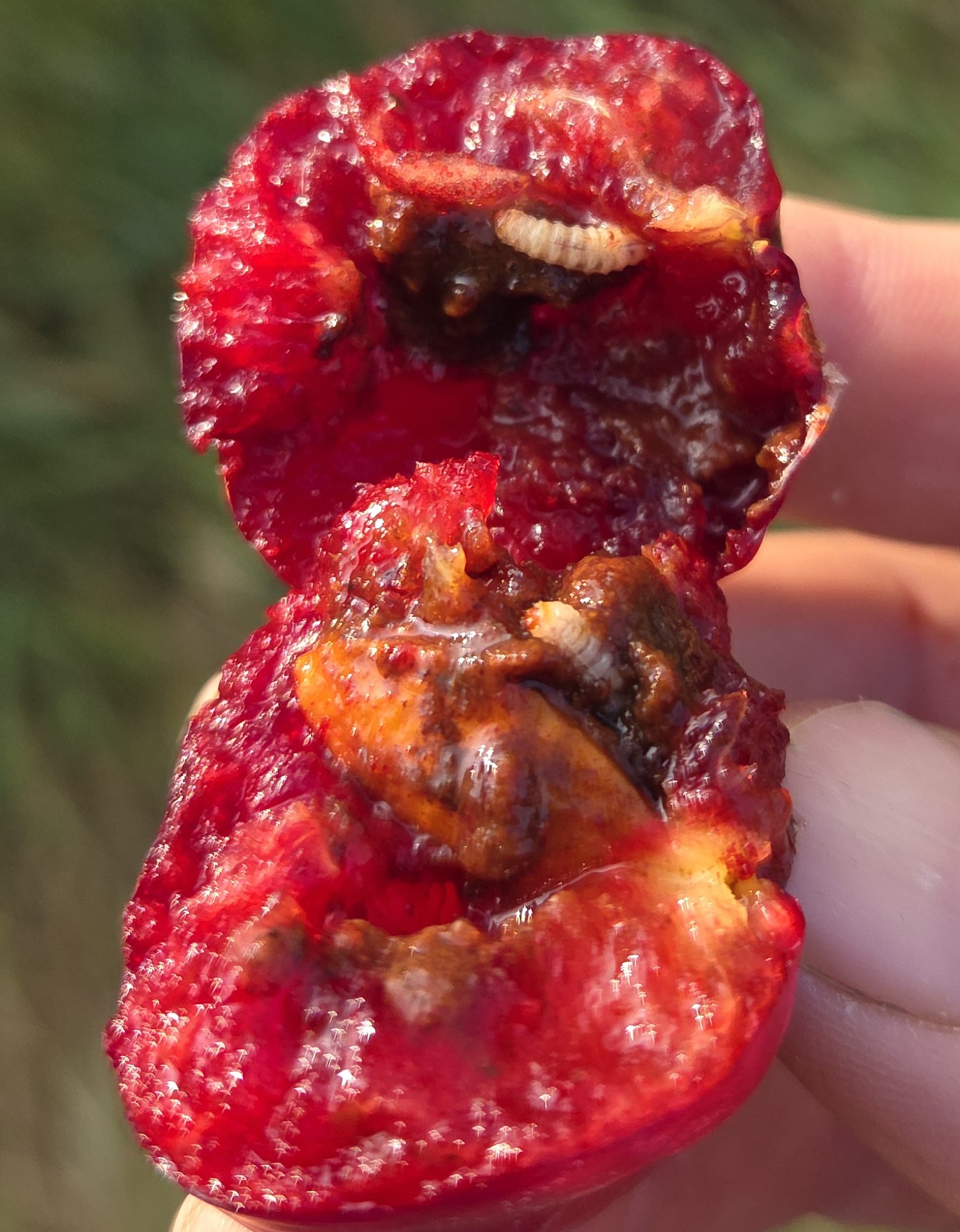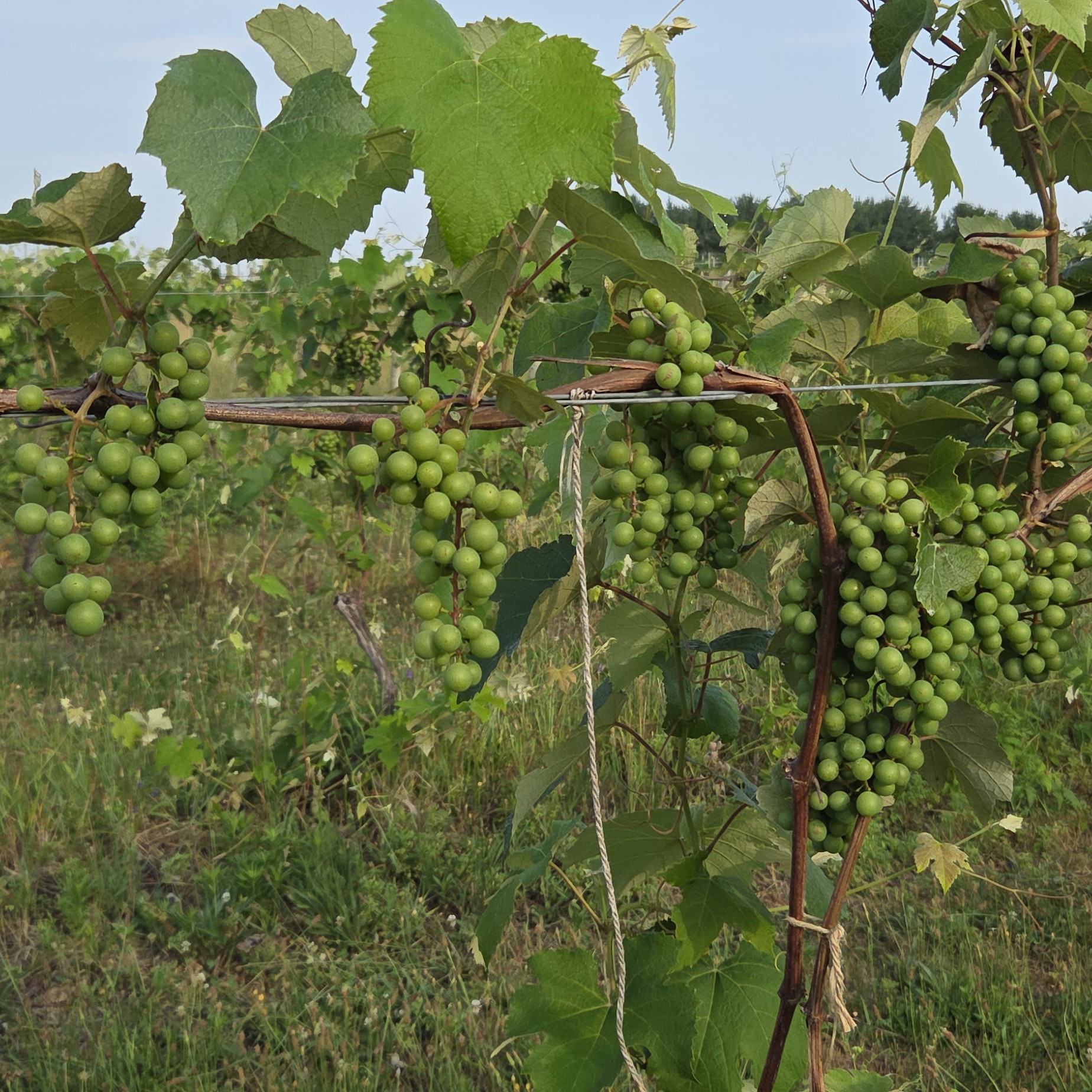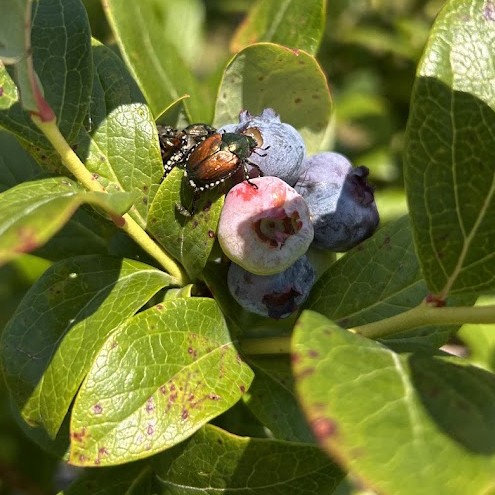Southwest Michigan fruit update – July 8, 2025
Fruit is ripening in southwest Michigan.

MSU fruit updates
Michigan State University Extension is in the process of filling the tree fruit specialist position based at the Southwest Michigan Research and Extension Center. Because of this, there will be a more abbreviated tree fruit section in our weekly updates until the position is filled.
Surveys
You can help Michigan Farm Link and Michigan State University Extension identify issues and challenges related to leasing or purchasing farmland by taking a brief survey. We want to learn so we can provide the best support possible for farmers seeking to lease or transfer land.
Weather
July has started warm and dry. High temperatures for much of the week were in the mid-80s with yesterday being an unusually cool day in the 70s. Low temperatures stayed in the mid-60s or warmer most nights due to higher humidity. Humid nights in the 60s are good conditions for powdery mildew development.
The only significant precipitation to report was on Sunday evening and Monday morning. Unsettled, humid air ahead of a cold front brought scattered storms through the area. Most of the region saw less than a tenth of an inch of rain, but some isolated areas saw up to half an inch.
The next week should see much the same as the last. High temperatures should be in the mid-80s most days with lows in the mid-60s. Scattered rain is predicted early Wednesday morning then again over the weekend, but significant precipitation amounts are not expected.
Tree fruit
Japanese beetles are becoming more prevalent. Some growers are reporting more oriental beetles this year as well. Both can cause damage to leaves and possibly ripe fruit. Oriental fruit moth and codling moth traps are still catching moths indicating mating and egglaying is possible.
Apricots are sizing again ahead of harvest.
Peach and nectarine pits are hard. Some early varieties such as Early 8 Ball are starting to show blushing colors ahead of final sizing.
Plums are coloring up. Where plum curculio populations are high, some plums are fully colored up and softening. These are the fruits with larvae present and feeding.

Apples are between 1.5-2 inches in diameter. Codling moth flight is still occurring. San Jose Scale crawlers are showing up on developing fruit.
Cherry harvest is underway. Sweet cherry harvest continues. Tart cherry harvest is largely complete for wholesale. U-pick tart cherry harvest is still going. Brown rot infections are being observed on tart cherries. Catches of spotted wing drosophila in monitoring traps are climbing.
Small fruit
If you are a berry grower in Michigan, check out this Michigan Berry Spotters Facebook group started by the Michigan State Horticultural Society.
Grapes continue to size quickly. Varieties with vitis labrusca in their parentage (Concord, Niagara, Brianna) are at berry touch. Other hybrid cultivars are at pea size berry with some tight clustered varieties near berry touch. Vinifera wine varieties are largely at buckshot with some more advanced varieties at pea size berry.
Management continues to focus on black rot, botrytis and other diseases that can impact fruit clusters. With the exception of powdery mildew, diseases that infect grapes in Michigan typically require rain events to disperse the spores. It only takes 0.1 inches of rain above 50 degrees Fahrenheit to trigger a possible infection.
Last week was a big week for the biofix for the second generation of grape berry moth. Using June 2 as the biofix for wild grape bloom, the biofix for this generation of berry moth likely started around July 3. This is when many growers begin their spray programs for managing berry moths. Intrepid is a good insect growth regulator to target the eggs and hatching larvae at this time of the season.
Shoot thinning should be finishing up. Some cluster thinning has already been performed in some blocks in the area for heavily cropped vineyards. Shoot tucking is underway as shoots continue to lengthen. This is a good time to pull early leaves to open the canopies. This helps dry out the clusters as well as make fungicide coverage more effective, both important for good disease management.

Blueberry harvest is underway. Cranberry fruitworm continues to be caught and numbers have begun to decline. If you are a grower in Michigan and haven’t taken advantage of Michigan Blueberry Commission’s partnership with the Michigan State University Plant and Pest Diagnostics clinic, keep it in mind as we progress through the season. This partnership allows every blueberry grower in Michigan to submit two samples to the Plant and Pest Diagnostics clinic for free. Follow this link for the submission form.

Strawberry harvest is complete. Renovation should begin soon.
Bramble fruit is developing in summer bearing raspberries with some growers harvesting now. Fall bearing varieties continue to grow.
Upcoming meetings
The Michigan State University (MSU) Extension Viticulture Field Day will be 30 July with the Michigan Enology Experience the next day on July 31. MSU Extension and the Michigan Grape Society expanded the field day to a two-day event to add a full day of winemaking to the agenda. The Viticulture Field Day will focus on new technologies for grape growers as well as updates on disease, insect and soil management focused for Michigan viticulture. The Enology Experience will walk attendees through some comparative wine tastings to discuss how Michigan wine fits into a broader global wine industry as well as help winemakers on good techniques by leading a wine flaws workshop.
See more details and registration information
This work is supported by the Crop Protection and Pest Management Program [grant no 2024-70006-43569] from the USDA National Institute of Food and Agriculture. Any opinions, findings, conclusions, or recommendations expressed in this publication are those of the author(s) and do not necessarily reflect the view of the U.S. Department of Agriculture.



 Print
Print Email
Email




